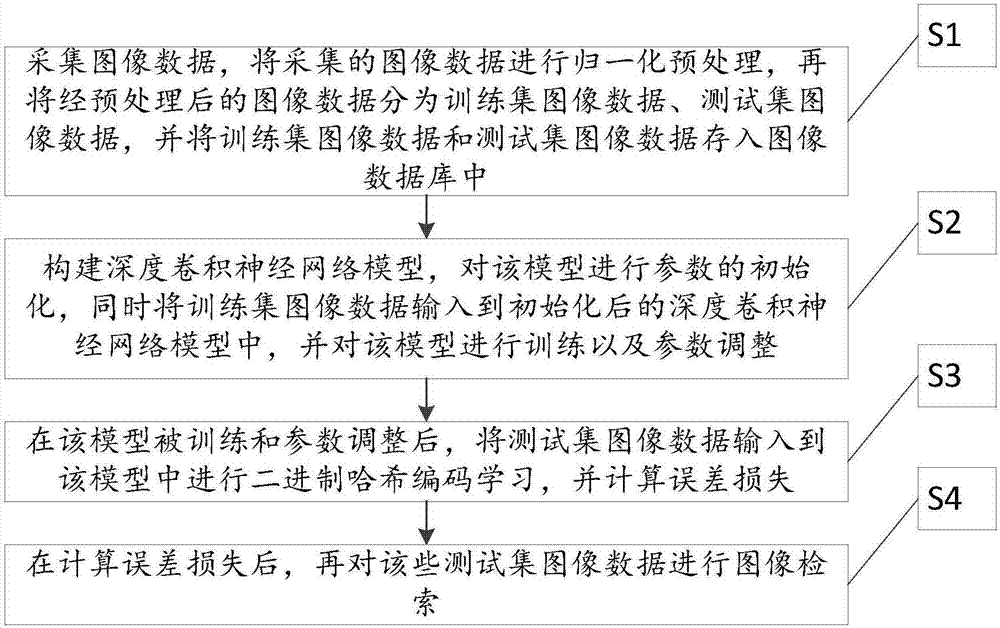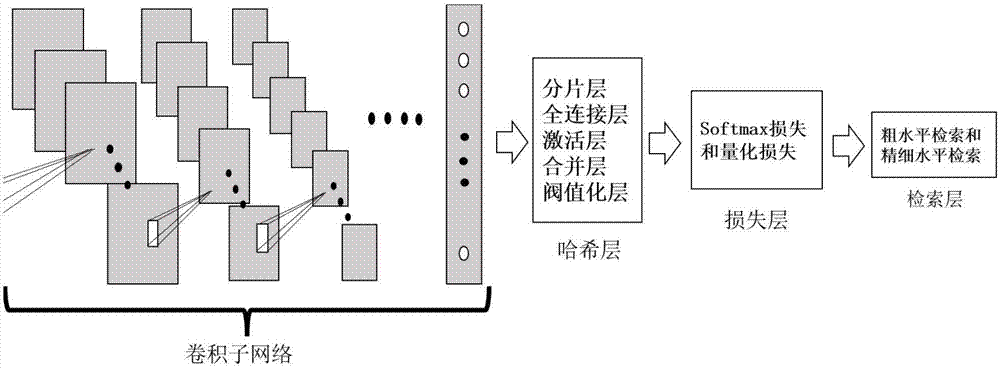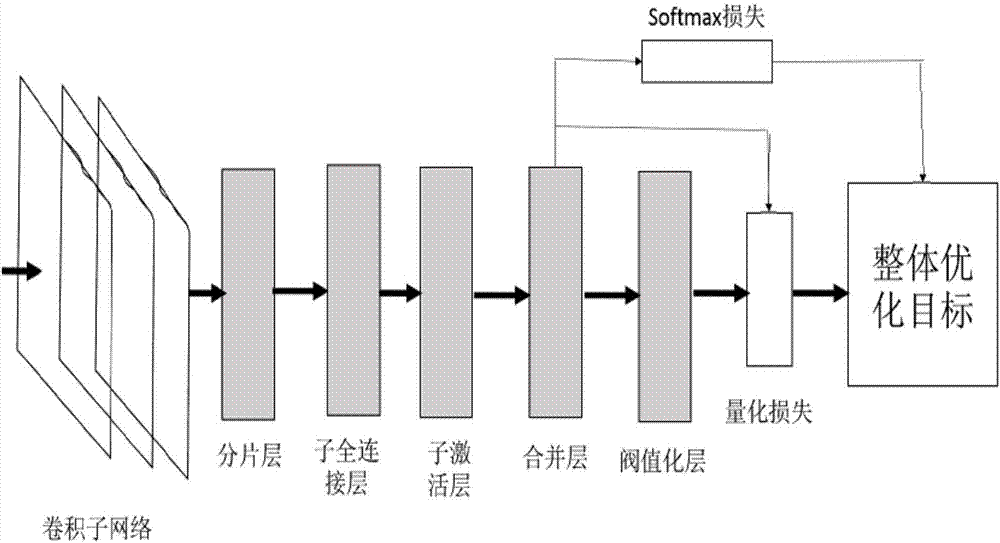Image retrieval method based on deep convolutional neural network
A deep convolution and image retrieval technology, applied in the field of deep convolutional neural networks, can solve the problem of inability to solve the problem of too much storage space for computational data, and inability to learn deep-level features of images, etc., to achieve the effect of improving accuracy
- Summary
- Abstract
- Description
- Claims
- Application Information
AI Technical Summary
Problems solved by technology
Method used
Image
Examples
Embodiment 1
[0048] Such as figure 1Shown, a kind of image retrieval method based on deep convolutional neural network of the embodiment of the present invention, this method comprises the following steps:
[0049] The first step is to collect image data, perform normalized preprocessing on the collected image data, and then divide the preprocessed image data into training set image data and test set image data, and divide the training set image data and test set image data The image data is stored in the image database; among them, the collected image data (such as MINST and CIFAR-10 data sets, the MINST image data set is composed of 7000 grayscale pictures, and the content of the pictures is handwritten 0 to 10; CIFAR-10 image The data set is composed of 10 categories of 32*32 color images. Download three experimental data sets from the Internet, delete the noise pictures first, perform normalization processing, and perform normalization preprocessing on them, and normalize The preproce...
Embodiment 2
[0078] Such as figure 2 with image 3As shown, the embodiment of the present invention is a deep convolutional neural network model, including: sequentially connected input layer, convolution layer, sub-sampling layer, magnetization layer, fully connected layer, the model includes: hash layer, loss layer and the retrieval layer; the hash layer, the loss layer and the retrieval layer are sequentially connected behind the fully connected layer; the hash layer includes: sequentially connected slice layer, fully connected layer, activation layer, merging layer and thresholding layer The retrieval layer, which includes: a coarse level retrieval layer and a fine level retrieval layer connected in sequence; the loss layer, which uses functions including: Softmax classifier loss and quantization error loss; the retrieval layer, It includes: a coarse-level retrieval layer and a fine-level retrieval layer connected in sequence; the coarse-level retrieval layer is used for coarse-level...
Embodiment 3
[0080] ST1: Collect short image data (such as ImageNet, MINSTHE and CIFAR-10, etc.) from the Internet, preprocess the collected data sets, including image denoising, etc., and divide the data sets to be used for retrieval into The training set and the test set store the processed image data in the image database.
[0081] ST2: Construct a deep neural network framework model. The model of the present invention is based on the convolutional neural network model. The seventh layer of the original neural network model and the replacement layer hash layer are used as the new seventh layer, and after the seventh layer Add a loss layer to calculate the quantization error, use the backpropagation algorithm to fine-tune the network for different data sets, and optimize the target.
[0082] The first is the convolutional neural subnetwork, which includes convolutional layers, downsampling layers, and fully connected layers. Use the powerful learning ability of convolutional neural netw...
PUM
 Login to View More
Login to View More Abstract
Description
Claims
Application Information
 Login to View More
Login to View More - R&D
- Intellectual Property
- Life Sciences
- Materials
- Tech Scout
- Unparalleled Data Quality
- Higher Quality Content
- 60% Fewer Hallucinations
Browse by: Latest US Patents, China's latest patents, Technical Efficacy Thesaurus, Application Domain, Technology Topic, Popular Technical Reports.
© 2025 PatSnap. All rights reserved.Legal|Privacy policy|Modern Slavery Act Transparency Statement|Sitemap|About US| Contact US: help@patsnap.com



